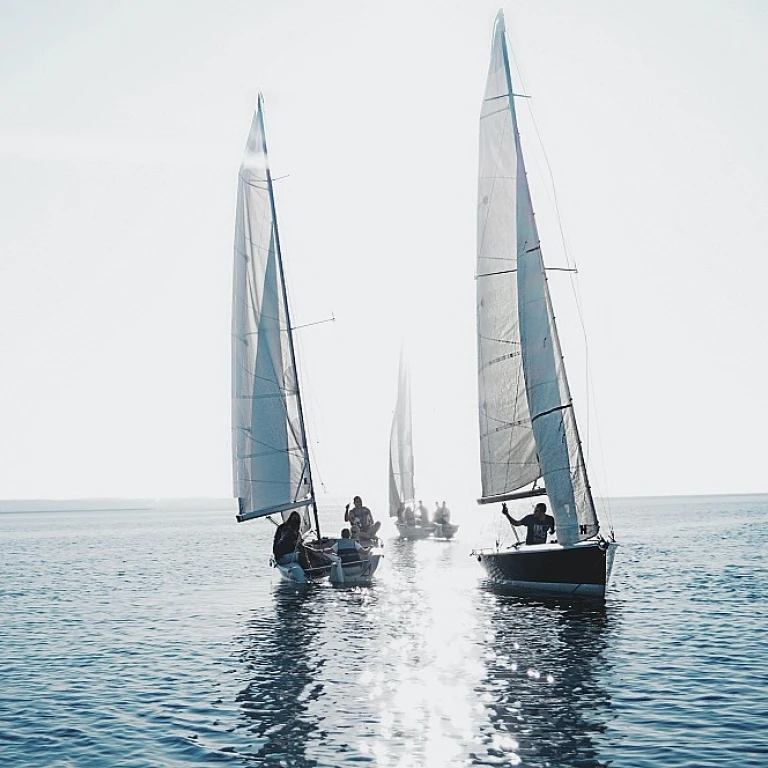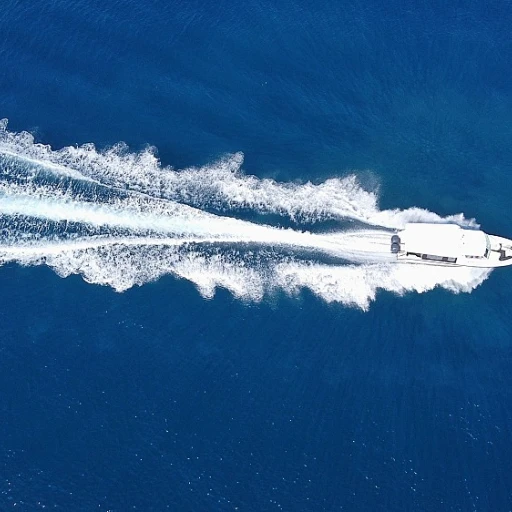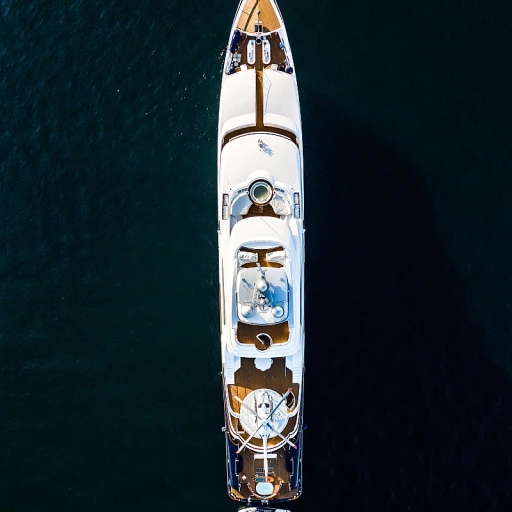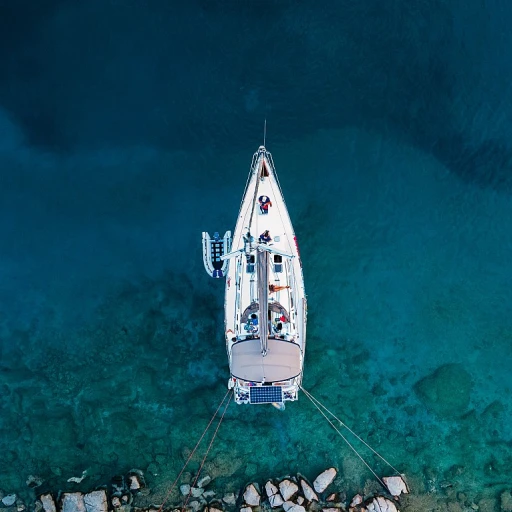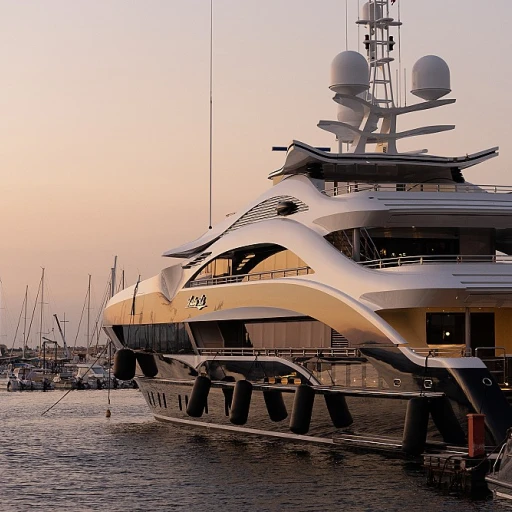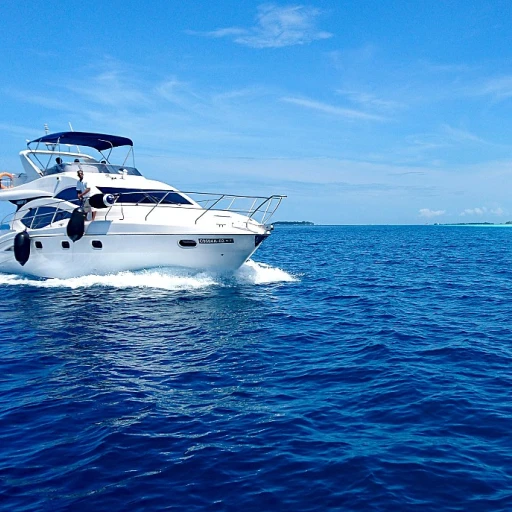-large-teaser.webp)
Understanding Pontoon Boat Anchoring Needs
Recognizing Key Anchoring Needs for Your Pontoon
Pontoon boats, favored for their stability and spacious decks, require specific anchoring techniques compared to other boats. Understanding the unique requirements of these vessels is essential to choosing the best boat anchor. Here are some key considerations when assessing anchoring needs:- Stability in Varied Conditions: Due to their flat, expansive shape, pontoon boats can be more susceptible to wind and currents. Effective anchoring will ensure stability whether you're fishing in a quiet lake or enjoying a breezy day out at sea.
- Bottom Conditions Assessment: The performance of your anchor greatly depends on the water bottom where you are located. Mud, sand, or rocky bottoms each demand different styles of anchors. Ensuring that your anchor is suited to the common conditions of your anchoring locations will help maintain the safety of your pontoon.
- Weight and Size Compatibility: The anchor needs to be appropriately sized and weighted for the pontoon to hold securely without being too cumbersome. A balance here prevents unnecessary strain on your boat while guaranteeing it stays put.
- Rode and Chain Requirement: The combination of rope, known as the rode, and the anchor chain helps in securely setting the anchor. Calculating the proper length and type for your pontoon ensures it functions effectively.
Types of Anchors Suitable for Pontoon Boats
Exploring Anchor Types for Pontoon Boats
When it comes to anchoring your pontoon boat, selecting the right type of anchor is crucial. Different water conditions and bottom types demand specific anchors to ensure your boat stays put. Here's a look at some of the best options available:
- Fluke Anchors: Ideal for sandy or muddy bottoms, fluke anchors are lightweight and easy to store. They provide excellent holding power in soft conditions, making them a popular choice for many pontoon boat owners.
- Box Anchors: Known for their versatility, box anchors work well in various bottom conditions, including rocky and grassy areas. They are designed to dig in and hold firmly, even in changing wind currents. For more on enhancing your boating experience, consider adding a boat BBQ grill to your setup.
- Mushroom Anchors: Best suited for small boats and calm waters, mushroom anchors are not typically recommended for pontoon boats due to their limited holding power. However, they can be useful in lakes with soft bottoms.
- Grapnel Anchors: These are compact and easy to store, making them a good option for temporary anchoring in rocky areas. They are not the best choice for long-term anchoring but can be handy in a pinch.
Choosing the right anchor involves considering the specific conditions you'll encounter. Whether you're dealing with a sandy lake bottom or a rocky riverbed, having the right anchor will ensure your pontoon boat stays secure. Remember, the key is to match the anchor type to the water and bottom conditions you'll face most often.
Factors to Consider When Choosing an Anchor
Considerations for Picking the Best Anchor for Your Boat
When anchoring a pontoon boat, choosing the right boat anchor is crucial for safety and stability. Several factors come into play, ensuring you not only pick well-suited anchors but also enhance your anchoring experience.- Location and Water Type: The location where you'll commonly anchor your pontoon plays a significant role. For instance, a lake with calm water will have different requirements compared to anchoring in a windy location with strong currents. Assessing the water type helps in picking anchors that hold securely to the bottom.
- Bottom Conditions: The nature of the lake bottom profoundly impacts the effectiveness of your anchor. Whether it's sandy, muddy, or rocky, choosing an anchor designed for specific bottom conditions ensures better holding. Box anchors, for example, excel in various bottom conditions and might be the best-anchor choice for diverse environments.
- Anchor Type and Weight: The type of anchor, whether a box-style anchor or a traditional anchor, should be selected based on your boat's size and the bottom conditions. Equally important is its weight. Light anchors are easy to handle, but heavier ones may provide better security in rough conditions.
- Anchor Rode and Chain: The combination of rope and chain (referred to as anchor rode) plays a critical role in ensuring your anchor functions effectively. A rope chain setup can absorb shock from wind current and water movement, maintaining the position of your pontoon boat efficiently.
- Storage Options: Consider where you'll store your anchor when not in use. A dedicated anchor box on your pontoon ensures quick access and helps in organizing your boat equipment efficiently.
Installation and Usage Tips for Pontoon Boat Anchors
Practical Tips for Efficient Anchor Setup and Use
When anchoring your pontoon boat, a well-planned approach ensures safe and secure anchorage, preventing drifting and ensuring pleasant outings on the water. Here are some practical tips to help you get the best out of your anchor setup:- Choosing the Right Location: Before anchoring, consider factors like water depth, wind current, and bottom conditions. An ideal spot allows for the anchor to grip well and maintain stability. Soft sandy bottoms are generally favorable for most anchors.
- Anchor Rode and Chain Length: For effective anchoring, ensure the anchor rode (a combination of rope and chain) is long enough. Typically, a scope ratio of 7:1 (seven feet of rode for every foot of water depth) is recommended. The inclusion of a chain assists the anchor in setting properly and adds to the holding power.
- Deployment Techniques: Lower your anchor slowly rather than tossing it, ensuring it sets correctly. Once the anchor reaches the bottom, gently reverse the pontoon boat to ensure it digs in. Avoid heavy power thrusts that might dislodge the anchor.
- Regular Monitoring: After anchoring, keep an eye on the boat's position to make sure it remains stable. This is especially important if there are shifts in wind or water conditions.
- Adjust for Conditions: If conditions change, such as increased wind or current, you may need to reset the anchor to prevent drift. Choose a heavier style anchor if conditions are particularly challenging.
Maintenance and Care for Your Boat Anchor
Keeping Your Boat Anchor in Top Shape
Maintaining your pontoon boat anchor is crucial for ensuring that it performs optimally in various water conditions and locations. Regular care will not only extend the life of your anchor and its components but also enhance your overall boating experience. Here are some tips to help you maintain and care for your boat anchor:- Inspect Regularly: After each use, carefully check your anchor, rope chain, and anchor chain for any wear, rust, or damage. Pay close attention to the moving parts of box anchors as they can wear out over time due to exposure to the elements.
- Clean Thoroughly: Rinse your anchor with fresh water after each outing, especially if you’ve been boating in saltwater. This helps prevent corrosion and keeps the anchor and its components functioning well.
- Store Properly: When not in use, store your anchor in a dry location, preferably in a designated boat anchor box. This minimizes exposure to moisture and helps prevent rust.
- Lubricate Movable Parts: Use marine-grade lubricants to keep the moving parts of your anchors, especially style anchors, working smoothly. Regular lubrication will prevent them from getting stuck or breaking.
- Replace Damaged Components: If any part of your anchor or anchoring system, such as the anchor rode or rope chain, is damaged, replace it as needed to avoid any potential issues while out on the water.
Common Mistakes to Avoid When Anchoring a Pontoon Boat
Avoiding Common Pitfalls for Smooth Sailing
Anchoring a pontoon boat requires not just the best anchor, but also an awareness of common mistakes that can lead to frustration and potentially dangerous situations. Here are some key missteps to avoid, ensuring a successful and stress-free anchoring experience:
- Underestimating Wind and Current: Many boaters overlook the influence of wind and current on their boat's positioning. Failure to account for these natural forces could result in drifting away from the desired location. Always consider wind current direction and speed when choosing the spot to drop your anchor.
- Choose the Right Anchor: Not all anchors are suited for the varying conditions found on lakes or rivers. A box anchor might excel in certain bottom conditions, whereas a different style anchor could be better for others. Ensure you're selecting an anchor that aligns with the specific environment you'll be navigating.
- Improper Anchor Chain Length: The chain plays a crucial role by adding weight and maintaining the proper angle for the anchor to dig into the bottom. Ensure the anchor chain is long enough for the depth and conditions of the water. The general rule is 7:1 - seven feet of rode (rope and chain) for every foot of water depth.
- Lacking Adequate Space: Before anchoring, ensure you have ample space from other boats, docks, and any structure. This prevents any unwanted collision if your pontoon pivots with the wind or current.
- Ignoring Maintenance: Neglecting anchor maintenance can pose serious risks. Regularly check for rust, wear, and damage. A well-maintained anchor box or chain ensures longevity and reliability when needed most.
- Skipping the Anchor Rode Setup: Proper rope chain or anchor rode setup is vital. Ensure it's deployed slowly and smoothly to prevent tangling, which can compromise effective anchoring.
Avoiding these mistakes will greatly enhance your anchoring confidence and capabilities. With careful attention to the variables discussed, your pontoon adventures can remain enjoyable and worry-free.

